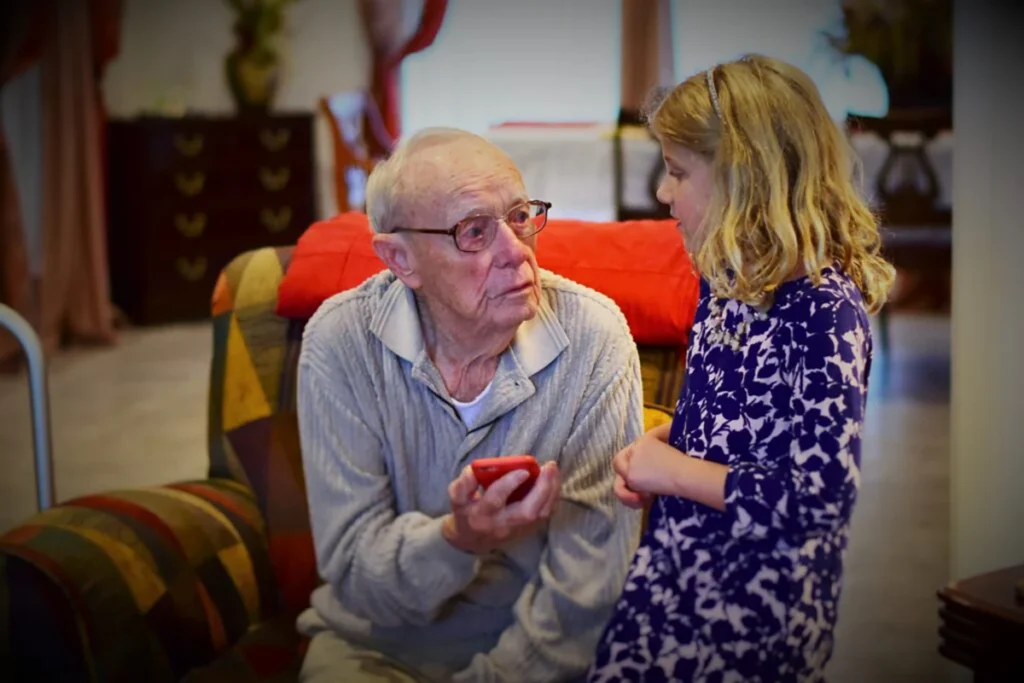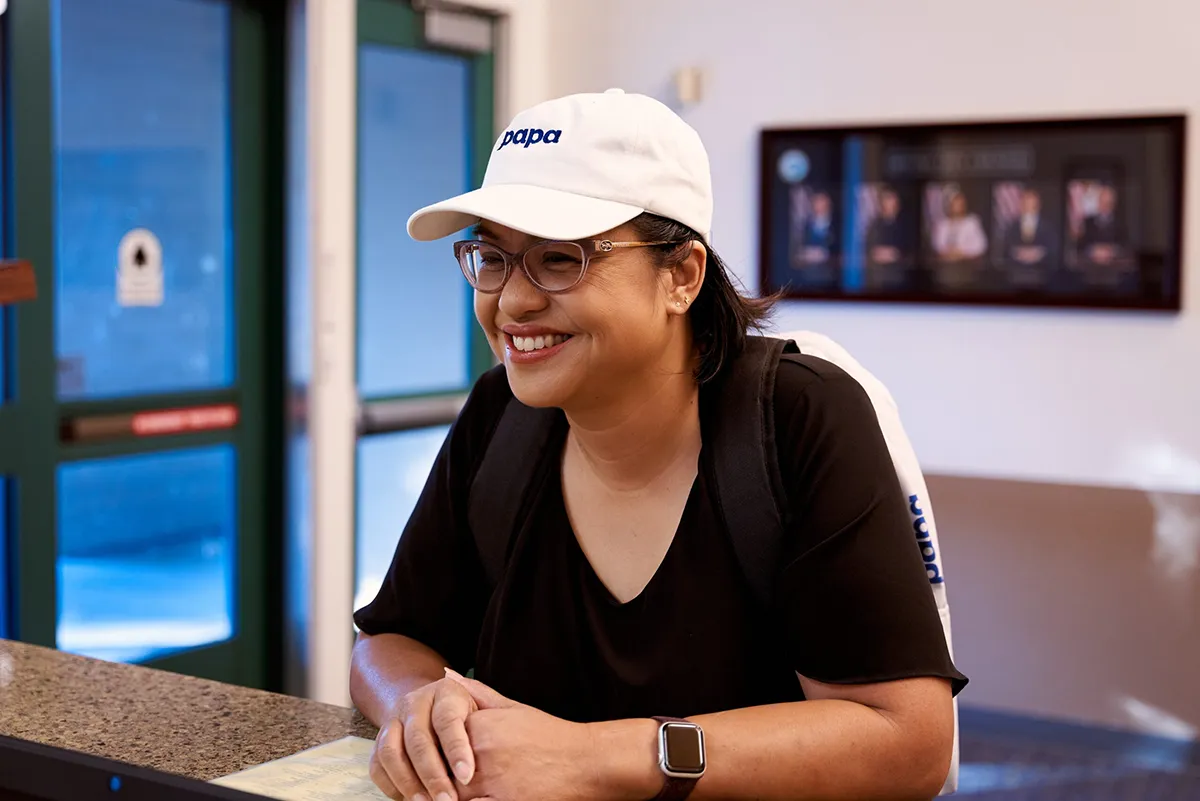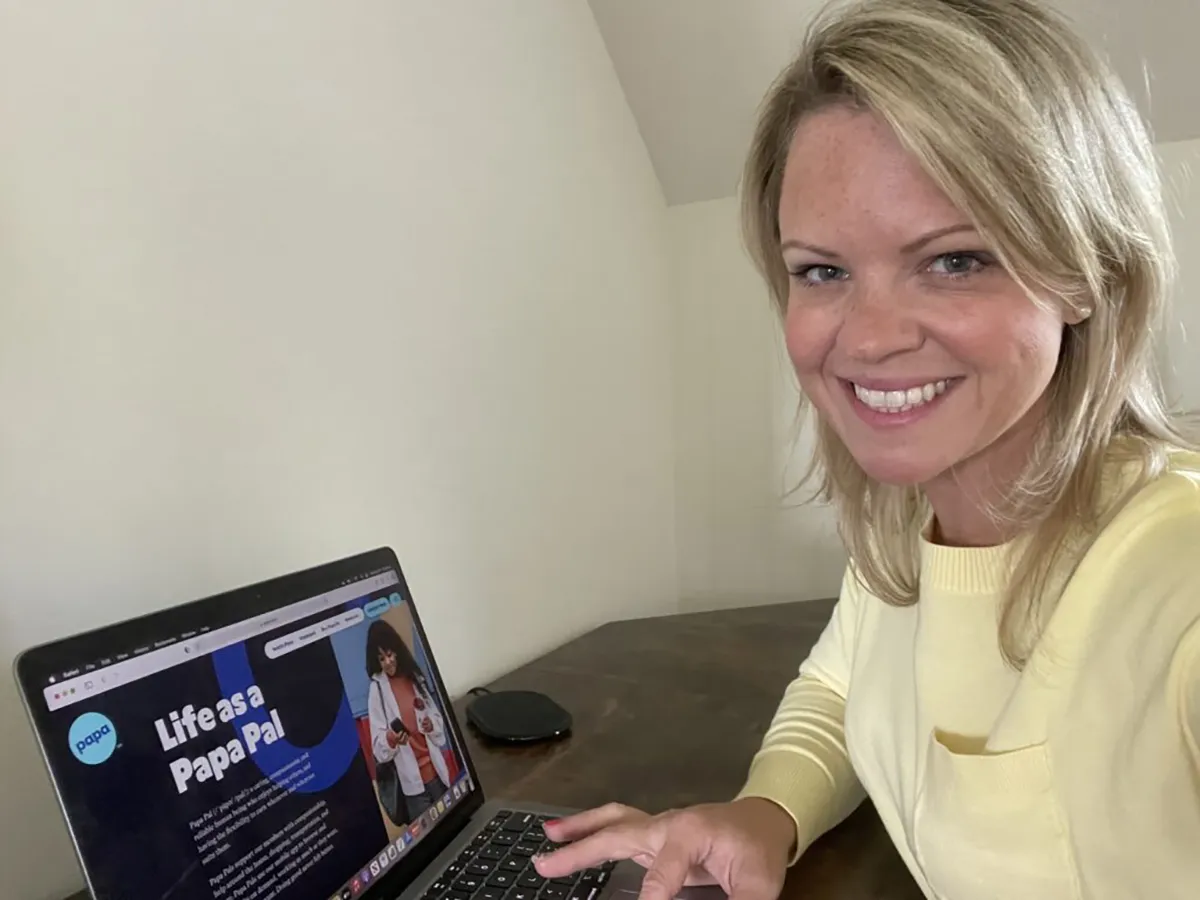Improving home safety & accessibility for everyone
Are you looking forward to welcoming a guest with limited mobility or a disability? Do you want to improve home safety for everyone? Read on to learn about home safety assessment, as well as solutions to make your home more safe and accessible for everyone.
Improving home safety & accessibility, may sound pricey. But that's not the case. There are many free and low-cost ways to make your home more safe and accessible for people of all abilities. The good news is that many of these adjustments are easy and don’t require the help of a contractor or handyman.
Simple things that cost nothing, like moving furniture to make a clear walking path, can make a difference.
Let’s dive into the many free and low-cost ways you can make your home safer and more accessible for everyone.
Where to start your home safety assessment
Begin your home safety assessment by focusing on anything that can cause accidents. Unfortunately, accidents happen all the time and are a reality of everyday life. So while we can't prevent all accidents, there are things you can do to reduce the likelihood of accidents happening in and around your home.
Make these adjustments to ensure that you, your family, or a guest can enter the home safely and without incident.
Home safety assessment checklist:
- Check around the driveway and entryway to make sure there is a clear path to the house. Remove any hoses, bikes, or other tripping hazards. If it’s winter, shovel snow and ice, and scatter salt or sand.
- Check outdoor lighting. Is the entryway and driveway well lit? You can improve lighting by adding motion detector lights and changing regular bulbs to brighter CFL bulbs. They not only last forever but also use less energy.
- Spray for wasps that are very close to your home. (Call a professional if needed.)
- Can drivers see the house number? Make sure first responders will have no issues finding your home in the event of an emergency.
Consider installing a ramp and handrails
- Build or borrow a ramp for steps to your front door. If you're having a guest over (or are caring for someone in your home) who uses a wheelchair or walker, you will likely need a temporary or permanent ramp. If you're handy, one option is to go on YouTube and find a tutorial to make a temporary ramp. You can also ask neighbors or search local social media groups to see if anyone has one you can borrow. Another option is to search for nonprofits that make ramps for accessibility needs.
- Check to see if all your stairs have handrails, which offer support and stability for all ages. (This is also a big help for little ones who are learning to use the stairs.) Search for nonprofits that help to make homes more user-friendly and ask about resources for installing handrails. One example is the Habitat for Humanity program called Aging in Place.
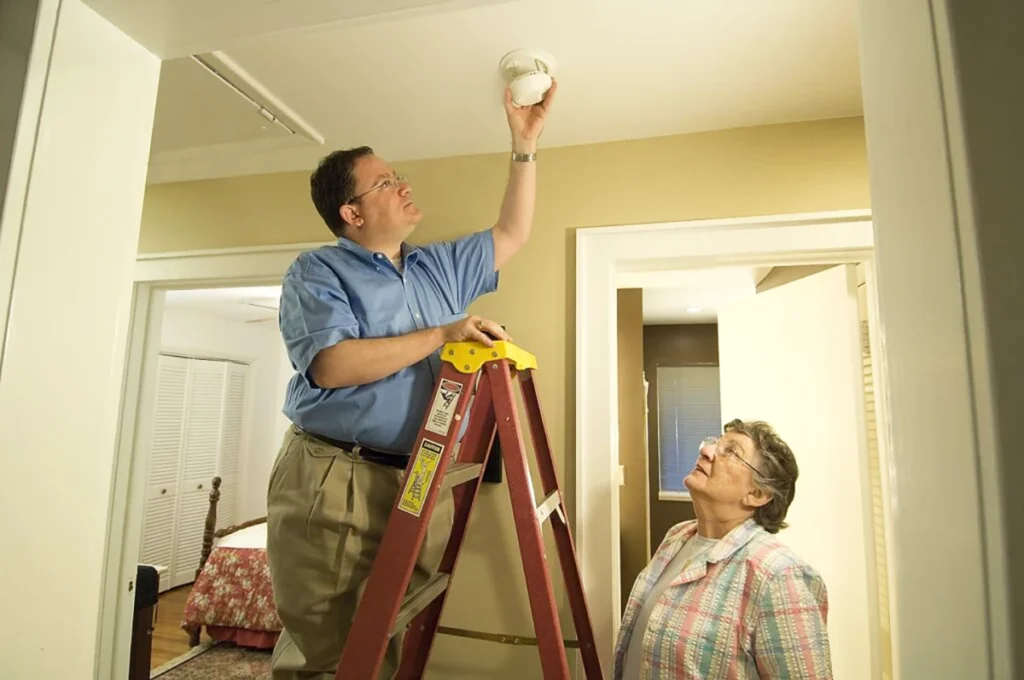
Check smoke detector and carbon monoxide batteries
- Check your smoke detectors and carbon monoxide detectors. Remove old batters and replace them with new batteries at least once a year. Then, test each alarm monthly.
Check the expiry dates of all detectors in the home is an essential part of any home safety assessment. Be sure to replace them at least every 10 years. If you're in doubt, replace them all.
Bathroom safety & accessibility assessment
Bathrooms are the most likely place to have an in-home accident. Wet floors, slippery bathtubs, and even the action of sitting and standing can all be hazardous.
Let's go through a few things you can do to improve safety and accessibility in the bathroom:
- Keep the floor dry. Between the sink, toilet, and bathtub, there's water all around. Make sure to mop up water and spills immediately.
- Secure any rugs or mats so they won't slip. Put a non-slip mat right outside the shower.
- Install grab bars and handrails.
- Handrails can be a big help, although installation is pricey. Instead, search for bathroom grab bars online or at a local store. Chances are, you can find some between $12 and $35. If you're handy, or have a friend who is, you can secure grab bars to the wall.
- Place a non-slip mat inside the bathtub. You can also borrow a shower chair from a friend or neighbor, or find one in a local Buy Nothing group.
- Change shower knobs to levers for minimal cost. It's much easier to use a lever or handle than a knob. The same applies to other knobs in the house.
- Add or install a raised toilet. (This is also an area where handrails are super helpful if you have it in your budget to make this update.)
- Check where you store medications and remove them from the reach of children.
If you have a guest with limited mobility, think about stocking the bathroom with all necessities before they arrive. Have shampoo and body wash already in the bathtub, place fresh towels on the counter or towel rack, and have a spot for them to set their toiletries.
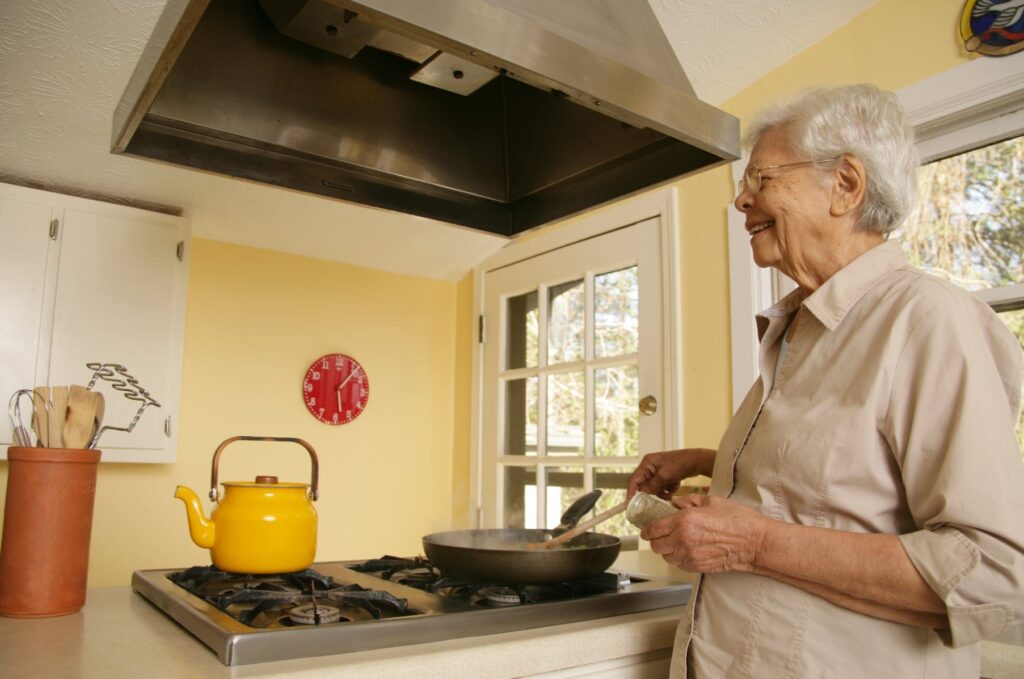
Kitchen safety & accessibility assessment
The kitchen is at the central hub of the home. In most homes, we eat, work, laugh, play games, and make plans in the kitchen. However much fun it is, it can also be a place where accidents happen.
Use this home safety assessment checklist to improve kitchen safety:
- Get a fire extinguisher. Having a small fire extinguisher in the kitchen can make all the difference if a fire starts. If you already have a fire extinguisher, check the expiry date to ensure it will work.
- Check your stovetop. Make sure burners are turned off when you're finished cooking. Next, let everyone know when you've used a burner. Burners remain hot for quite a while and you don't want anyone accidentally touching them.
- Whether you have a gas or electric stove, make sure the area is clear of items such as kitchen towels and food packaging. This is a fire hazard.
- Store hazardous items safely. Place chemicals, cleaners, and any other poisonous or hazardous materials in a safe storage location.
- Put commonly-used items around waist level to reduce the need for someone to use a stool or ladder.
- Watch for all spills. Most people think of the danger of spilled liquids, but flour and sugar can be just as slippery. Clean spills immediately.
- Place a chair in the kitchen to provide somewhere to sit, when needed.
Don't forget about clothing:
- Review your clothing. Kitchen burns are a very common accident. Don't wear loose clothing while cooking.
- Wear closed-toed shoes. If something sharp falls, it's less likely to injure you.
- Use an apron. It's handy for wiping messy hands, but you can also use apron pockets to hold items, such as eye glasses, so they are easily accessible.
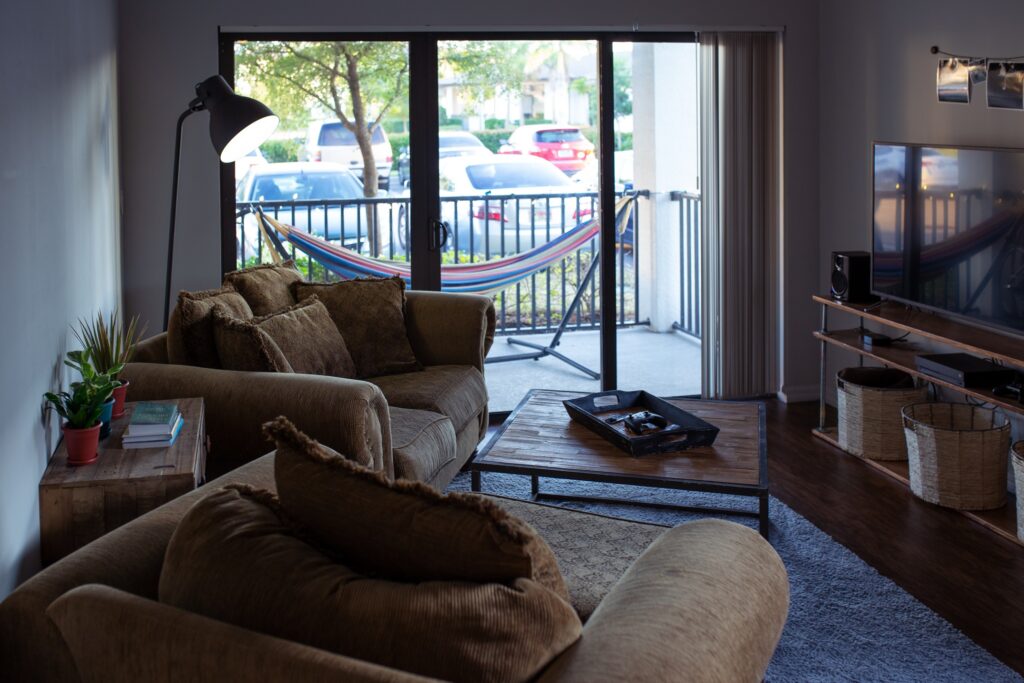
Safety around common areas
Common areas are places where people gather to hang out, watch a movie, or eat. Think of the living room, media room, or family room.
Here are some things you can add to your home safety assessment checklist to make sure these spaces are accessible for all:
- Clean up floor clutter. Make sure there are no piles of clothing, random shoes, or blankets on the floor. These things sometimes go unnoticed.
- Make sure there is adequate space for any medical equipment, such as a walker. For example, you can move a couch or table farther back to free up space, and check the hall for anything that narrows the usable space.
- Remove throw rugs (any rugs that can slip around should be removed). Instead, use a rug with a rubber backing.
- Watch out for cords; they are like little tripwires. Since we use items with cords constantly, getting rid of them isn't an option. Make sure they are hidden behind furniture or secured against the wall.
- Take another look at steps. Slipping on stairs or a single step is not unique to older adults. People fall down, and up, stairs all the time. Adding handrails, if they are not there already, is a wise update for any home. Some low cost alternatives include wearing no-slip socks/grippy socks, using adhesive rubber mats, or adding non-slip strips. Lastly, avoid the need for going upstairs if there are accommodations on the first floor.
- Find out what kind of couch or chair feels the easiest for your guest to get in and out of. Placing a rolled up blanket behind them gives some lumbar support. Plus, it helps prevent the “sinking into the couch” situation so it's easier to stand up.
Don't forget about pets
Anything that moves around someone's feet can be dangerous. Pets aren't always seen, they're sometimes unpredictable, and they move quickly. Consider putting them in a room or crate for a short time while your guest is moving from room to room. This will keep your pet out of harm's way, too.
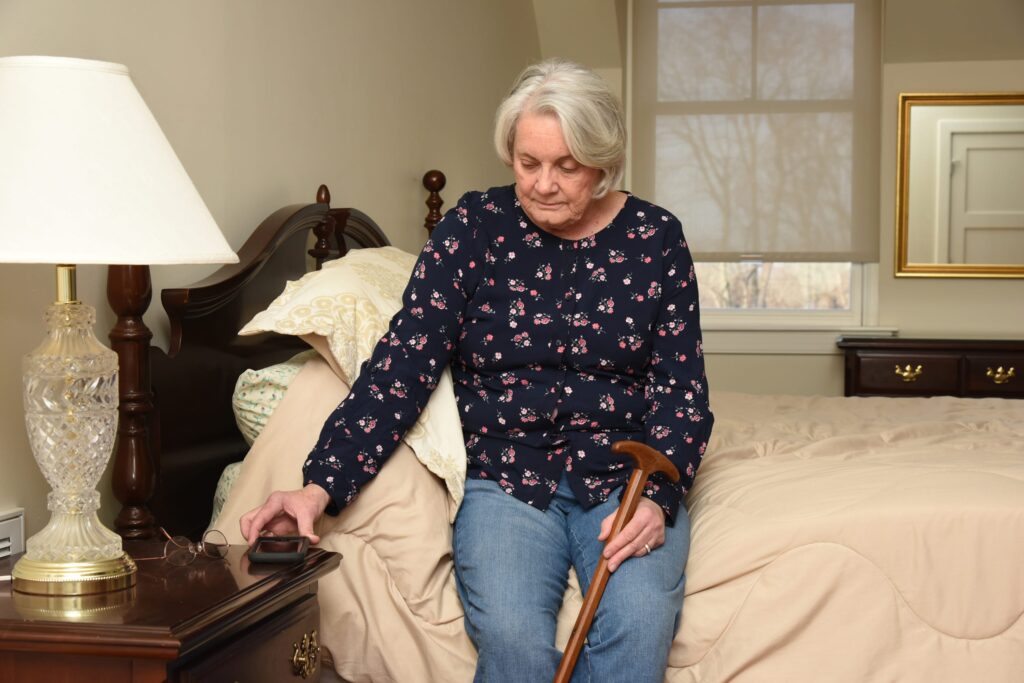
Bedroom safety tips
While a bedroom is not high on the list of places accidents happen, there are still some valuable improvements you can make.
- Place a phone within reach of the bed. You can also invest in a device that dials 911. Use this helpful list to research options for wearables and mountable receivers.
- Think about how someone in your home can let you know they need help, besides shouting. One option is wireless rechargeable doorbells. You can push the button to let someone know you need help.
- Is it too hot? Many people get very hot when they sleep. If you have a room that tends to run warm, add a stand-alone fan.
- Is it too cold? Have plenty of blankets and maybe even some fuzzy socks handy. In some regions where it gets especially cold at night, a heated blanket can be a great addition.
- Make sure electric blankets, mattress warmers, and heating pads have automatic shut offs and timers.
- Check to see that you have enough pillows for sleeping and support.
- Provide easy access to heating pads and ice packs. Both can offer quick relief to aches and pains.
- If you have an adult guest, ask them what things they usually need in the night. If there is anything they need, such as medication, place it by the side of the bed to reduce middle-of-the-night moving around.
Ensure home safety & accessibility with these extra steps
- Make a list of local healthcare providers, including the nearest urgent care, emergency dentist, late night or 24-hour pharmacy, walk-in clinic, emergency room, and an optometrist or eye clinic. Keep a physical copy posted where everyone can find it.
- Make a list of 24-hour virtual care (tele-health) providers that you can call, text or video chat. Many virtual primary care providers accept patients with and without insurance. (In most cases, it will be less costly than a visit to urgent care.)
- The ability to speak with a doctor, without having to leave your home, can be a huge relief for everyone. Plus, virtual care doctors can often provide the type of care you would receive at an urgent care. For instance, they can write prescriptions and send them directly to your pharmacy.
- If possible, prepare a first floor room for your guest. It will remove a lot of potential risks. If that isn't an option, make sure you have a safe plan for them getting to an upstairs bedroom at the end of the day. Don't wait until everyone is tired at the end of a long day. Encourage everyone to get upstairs a little earlier.
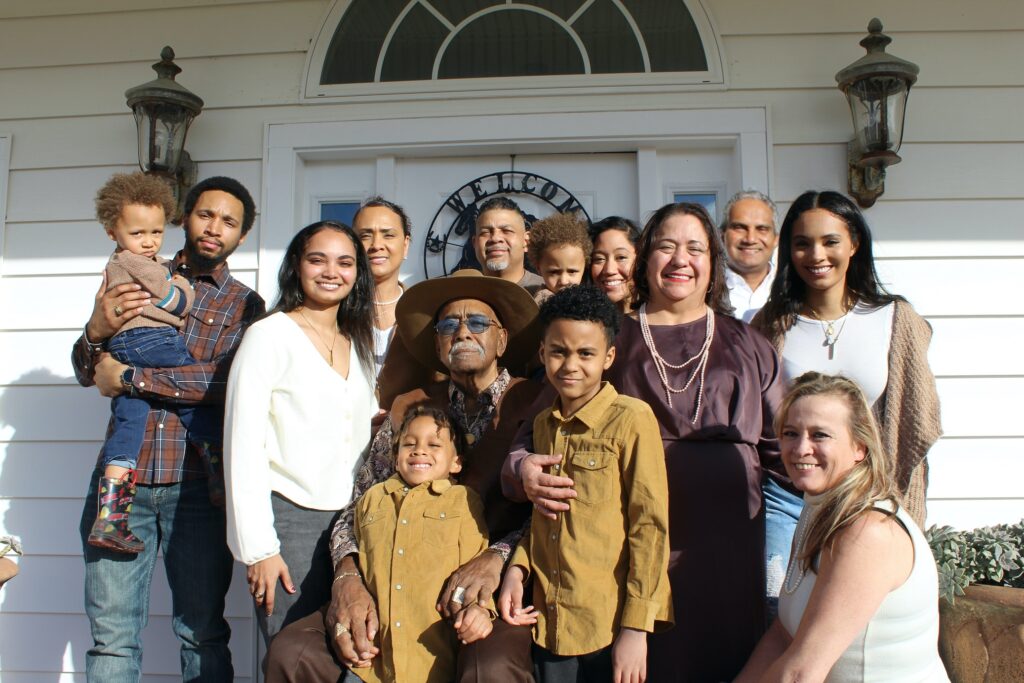
Ask your guest about their concerns
It never hurts to check in with your guest beforehand and see if there is anything you can do or have on hand to help their stay be more enjoyable. This is an often overlooked part of home safety assessment preparation. Send them photos of the rooms they will be using to see if they have any suggestions or needs. Many of us have anxiety with travel and staying somewhere new. This can ease of those feelings.
If you're having a guest over to stay for a night or two, one very easy thing you can do ahead of time is to make a guest basket. Fill it with things that will ease any anxiety they might experience. Things like socks with grippers on the bottom, heating pads, water bottles, ear plugs, and eye masks, can all come in handy.
A safe & accessible home benefits everyone
There are many ways to make your home accessible for all. In most cases, and with a little preparation and some elbow grease, you will spend very little and make some meaningful improvements. Get started today and make small changes that will have a lasting, positive impact.
Become a Papa Pal companion caregiver and help community members at home
If you're interested in working part-time helping people in your community, consider becoming a Papa Pal companion caregiver. As a Papa Pal, you set your own hours, work when you want, and choose the type of work you do.
Papa Pals help older adults, seniors, and families in a variety of ways. They provide companionship care while also helping around the house. For example, Papa Pals can change light bulbs and smoke detector batteries, and do some of the safety-related tasks mentioned above. Plus, they can help Papa members around the house with laundry, light cleaning, and meal prep.
Many Papa Pals also offer company on a walk around the neighborhood and act as an exercise buddy. Others lend a hand with pet care and basic tech support. All Papa Pals enjoy great conversations.
Papa Pals are kind, helpful, reliable, and compassionate people. No two Papa Pals are the same, but all Papa Pals are motivated to help others. Click here to start your application.
